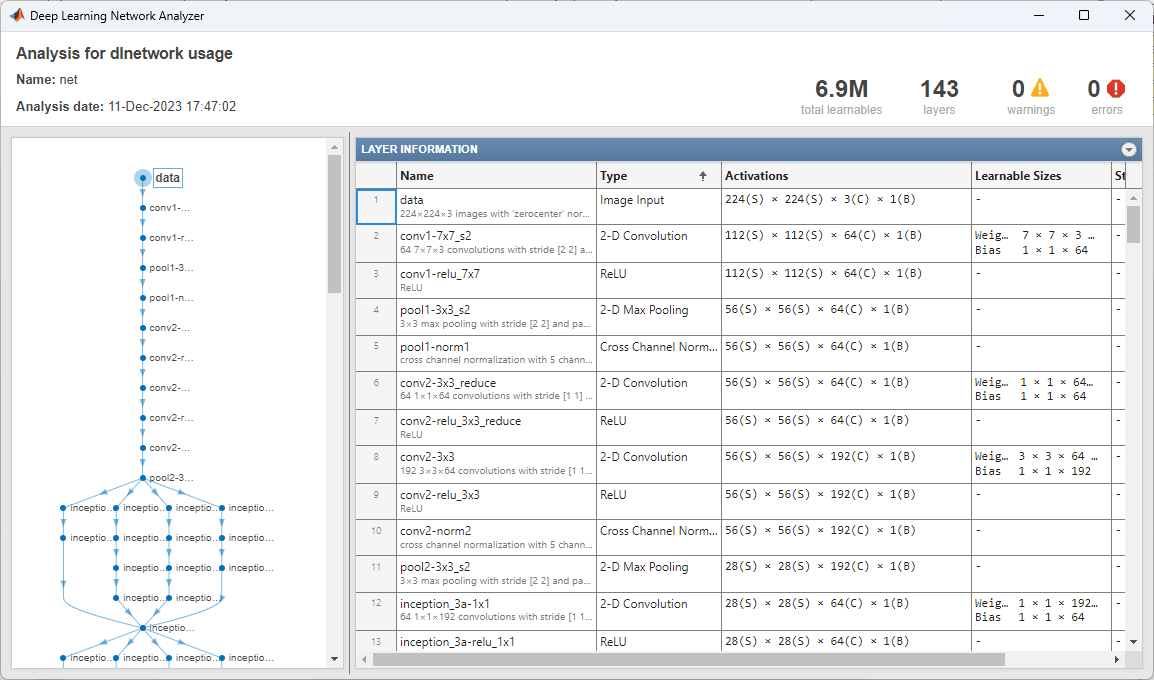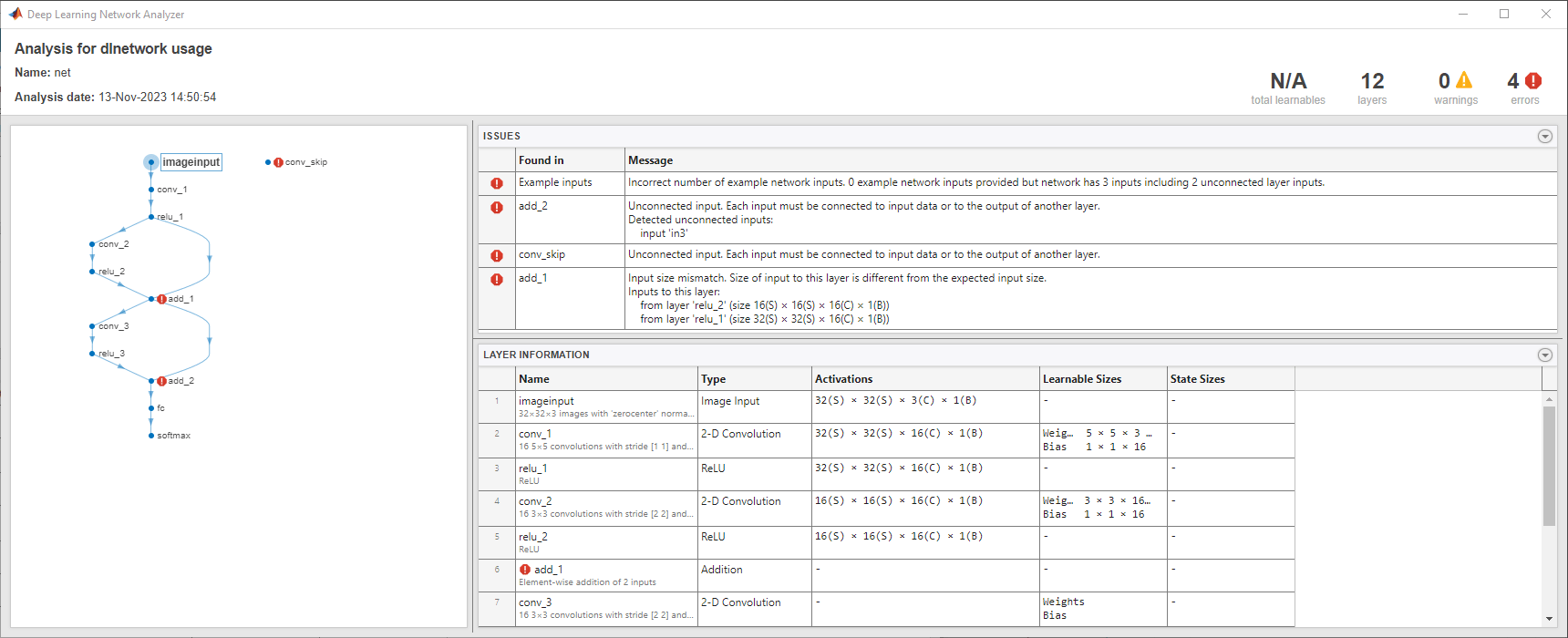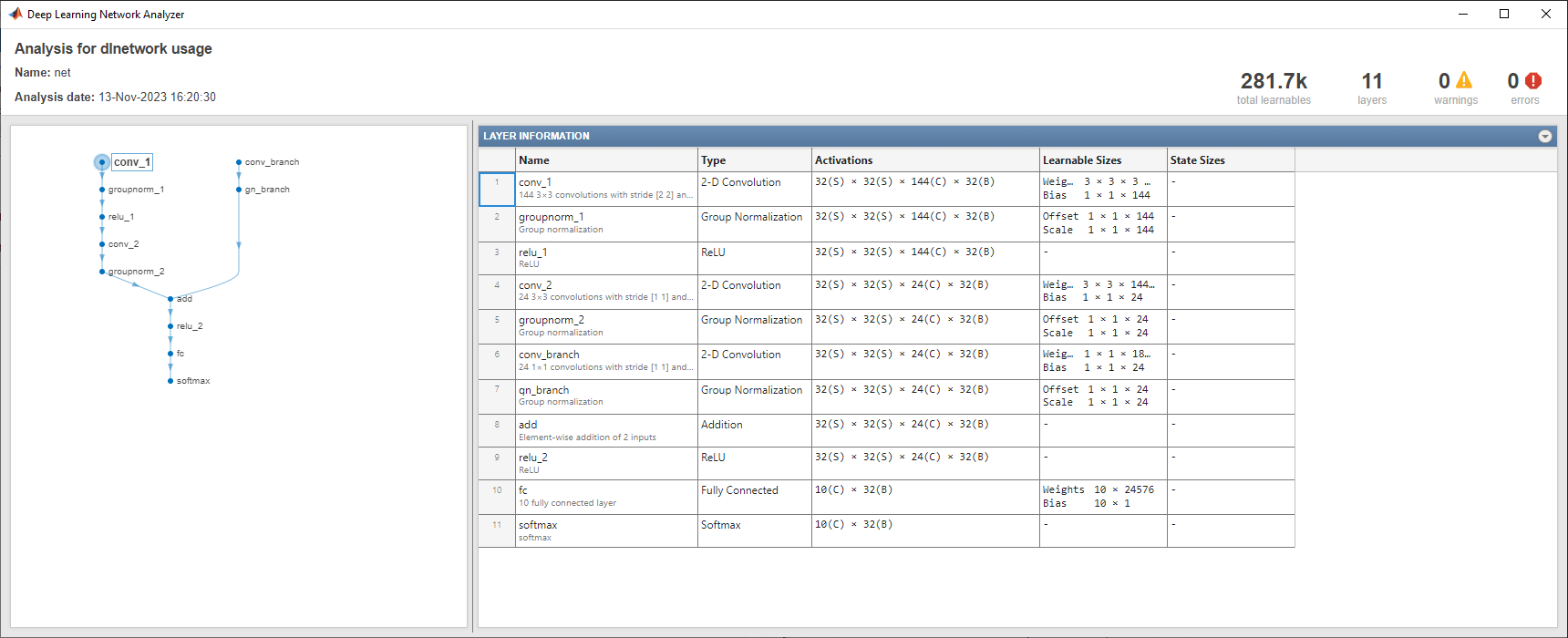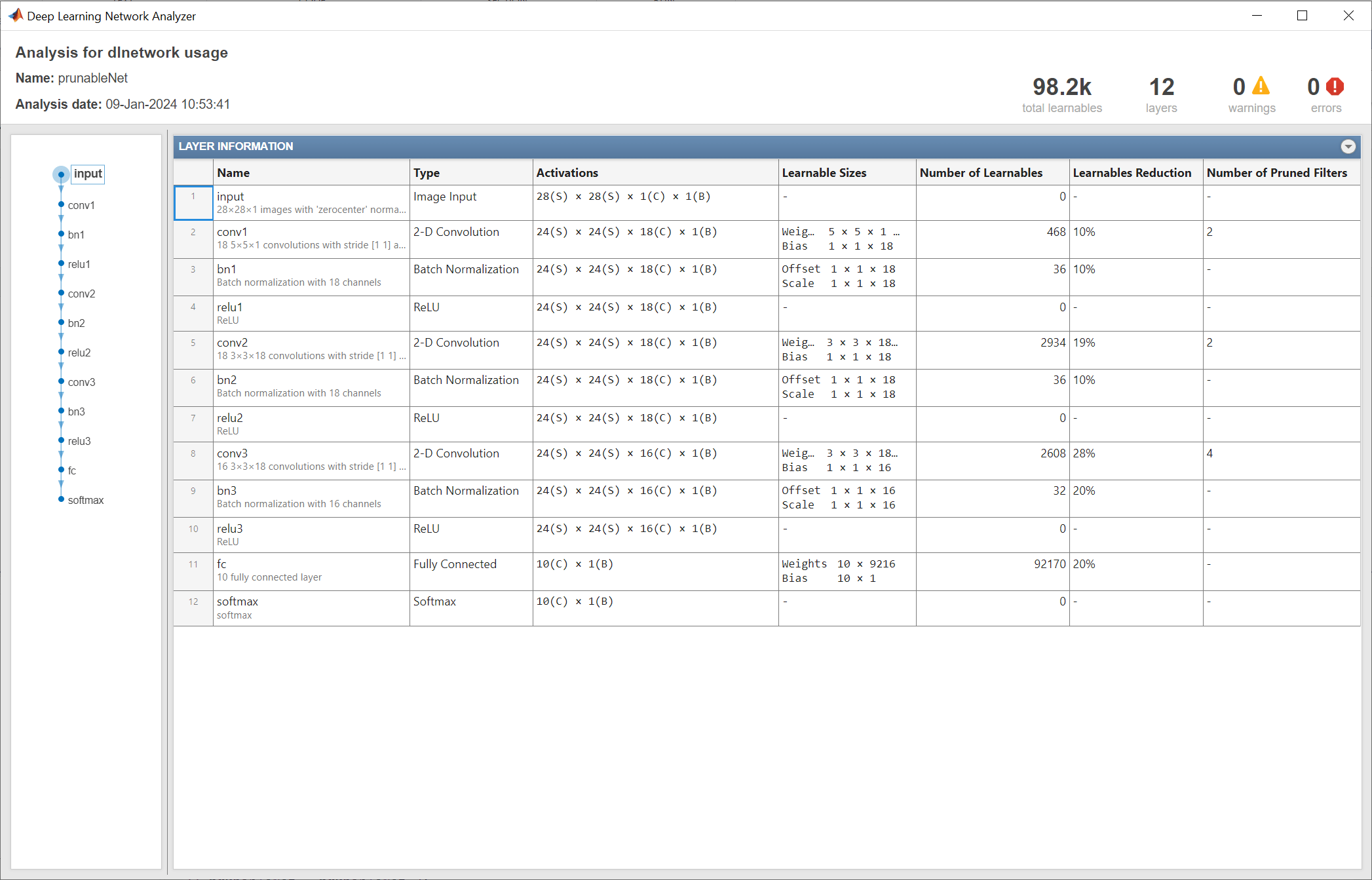analyzeNetwork
Analyze deep learning network architecture
Syntax
Description
Use analyzeNetwork to visualize and understand the
architecture of a network, check that you have defined the architecture correctly, and
detect problems before training. Problems that analyzeNetwork
detects include incorrectly sized layer inputs, an incorrect number of layer inputs, and
invalid neural network structures.
Tip
To interactively build and visualize deep learning neural networks, use the Deep Network Designer app. For more information, see Get Started with Deep Network Designer.
analyzeNetwork( analyzes and detects
errors and issues in the specified network or layer array. The function displays an
interactive visualization of the network architecture and provides detailed
information. The information includes the layer types, the sizes and formats of the
layer learnable parameters, states, and activations, and the total number of
learnable parameters.net)
If the network contains ProjectedLayer objects, then the function additionally displays
information about the percentage of learnables removed by projection.
If the network is a taylorPrunableNetwork object, then the function additionally displays
information about the proportion of learnables removed by pruning and the number of
pruned filters.
Each activation dimension has one of these labels: "S"
(spatial), "C" (channel), "B" (batch),
"T" (time or sequence), or "U"
(unspecified).
analyzeNetwork(
analyzes the neural network using the specified example network inputs. The software
propagates the example inputs through the network to determine the size and format
of layer activations, the size and number of learnable and state parameters, and the
total number of learnables. Use this syntax to analyze neural networks that have one
or more inputs that are not connected to an input layer.net,X1,...,Xn)
info = analyzeNetwork(___)NetworkAnalysis object. Use this object to programmatically access the
analysis results. For example, you can access the total number of learnables, layer
information, and network issues.
___ = analyzeNetwork(___,Plots=
also specifies which plots to display during the network analysis. To analyze the
network programmatically, without opening the analysis plot, set the
plotName)Plots option to "none" .
Examples
Input Arguments
Output Arguments
Version History
Introduced in R2018aSee Also
Deep Network
Designer | trainnet | trainingOptions | dlnetwork | plot | summary | NetworkAnalysis
Topics
- Create Simple Deep Learning Neural Network for Classification
- Prepare Network for Transfer Learning Using Deep Network Designer
- Build Networks with Deep Network Designer
- Retrain Neural Network to Classify New Images
- Pretrained Deep Neural Networks
- Visualize Activations of a Convolutional Neural Network
- Deep Learning in MATLAB




